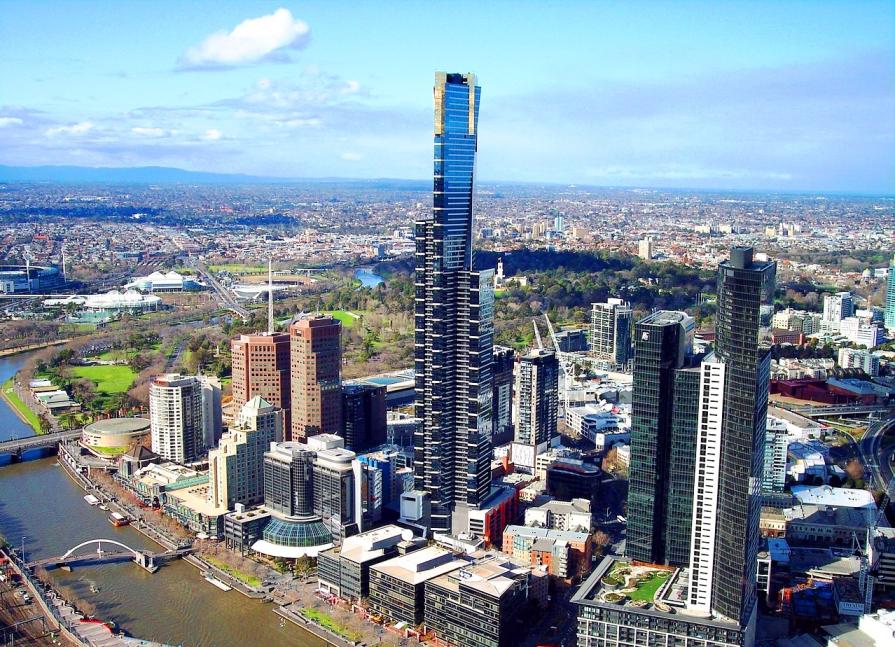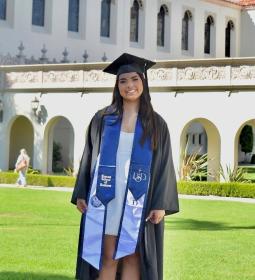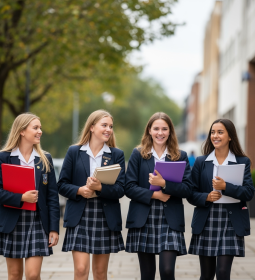Australia is sometimes called the "smart country" - despite its relatively small population, it has produced many successful scientists, technicians and artists. The Australian education system is considered one of the best in the world. Australia's universities are renowned for cutting-edge research and teaching methods, which makes them popular with international students. The best universities are included in the QS World Ranking, Times Higher Education thanks to well-structured study programs that focus on a variety of skills: critical thinking, creativity, communication, literacy, analytical thinking, ethics and much more.
Australia's secondary schools have high standards and an extensive curriculum. There are public (70% of students) and private (30%), all of which are subject to strict rules and controls.

School education in Australia
Schoolchildren in Australia start learning from the age of 6:
- Primary education - grades 1-6
- Middle grades - 7-12 grades.
Typically, students attend primary school from the age of 5 and graduate at the age of 17-18.

Graduates who successfully complete grades 11 and 12 receive a high school diploma or HSC (comparable to British A-level and German Abitur ), the right to go to university or college. Each student is graded on a scale of 1 (highest) to 25 (lowest) based on the combination of subjects and outcomes. Most Australian universities set a minimum HSC score for student admission.
English is a compulsory subject in all secondary schools in Australia. Mathematics, science and physical education are also required. The school offers advanced modules in individual subjects, there is a wide range of electives.
Public Schools
Public secondary schools provide affordable and high-quality secondary education - a total of more than 50 different subjects, of which students must choose six (some of the disciplines are compulsory) + sports events are held. Classes are held from 9 to 15 hours.
All public schools are equipped with modern computer labs, some educational institutions have audiovisual recording studios, vocational training centers with state-of-the-art technology, photo labs and multimedia equipment. Individual programs work in music, dance, ballet, drama, business administration, aeronautics, information technology. Sports programs:
- Football
- Golf
- Tennis
- Basketball
- Surfing in coastal areas.
Some schools offer continuing education programs in foreign languages, sports, arts and music.
There are “regional programs” for public schools in small rural towns. Basic items are always offered, but additional items may be limited. If you are attracted to a relaxed lifestyle, then these schools are a good alternative to save money as they provide a national level of education.
Private schools

Private schools in Australia can be compared to British ones. The level of education is high, more "academic" than in public schools. Extracurricular activities play an important role: students are actively involved in sports and / or music. Private schools offer accommodation services, which is important for children from large farms (so-called "stations") in the interior of the country: the school for them is often hundreds of kilometers away, and children come home during school holidays.
School uniform
Nearly all public and private schools in Australia require students to wear school uniforms. Each high school has its own special uniform and shop where you can buy new or used.
International Baccalaureate (IB)
International Baccalaureate - International secondary education program (equivalent to Australian HSC, German Abitur, etc.). IB students receive a structured education and enroll in leading universities in different countries. The program is convenient for those who often move or have not decided where the child will receive higher education.
IB programs are available in English, Spanish, French. The IB curriculum and diploma is globally recognized and entitles graduates to enroll in universities in 80 countries. Admission criteria for the IB program are selective: students must demonstrate a high level of academic achievement in a number of subjects.
VET, Vocational and Technical Schools (vocational schools)

The Australian education system invites schoolchildren to take vocational courses, get a specialty after school and find work. These courses focus on hands-on learning and industry-specific skills. Many schools offer technical, continuing education (TAFE), vocational education and training (VET) courses. Popular industries:
- Production
- Hotel business
- Sport
- Tourism
- Business
- Marketing.
Each state or territory independently manages the vocational education, training, technical and continuing education system.
Higher education in Australia

The highest level of education in Australia is university. You can choose from 43 universities: 40 are publicly funded, two are international universities and one is a private university. You can choose between a bachelor's degree or a postgraduate degree, which can include a certificate, a postgraduate degree, master's and doctoral programs.
Higher education is offered by universities or technical colleges: religious, private, some under centralized management. There are many international students in Australia, especially from Asia.
The oldest higher education institution in Australia is the University of Sydney, founded in 1850, with a total student population of over 50,000.
Top 10 Universities in Australia
- University of Melbourne
- University of Sydney
- Monash University
- University of New South Wales
- Australian National University
- University of Queensland
- RMIT University
- Deakin University
- University of Adelaide
- University of Technology
Admission to Australian Universities: Pathway Programs

Pathway programs are the first step to higher education in Australia. International students may need additional support and assistance to get used to the education system and approach to learning, to learn basic courses and English.
Academic year in Australia
Australian colleges and universities accept students twice a year, the academic year is divided into 2 semesters:
- Semester 1 - from late February / early March to late May / early June.
- Semester 2 - from late July / early August to November.
The school year begins in late January or early February, professional courses and university programs start around February. 3-4 semesters in schools, 2 semesters in universities. There is a 2-4-week break between 2 semesters, summer vacations last longer.
Tuition fees in Australia
The Australian Government recommends a student budget of AUD 19,830 per year for living expenses.
Average tuition fees for tertiary education in Australia are between A $ 20,000-30,000 per year.














